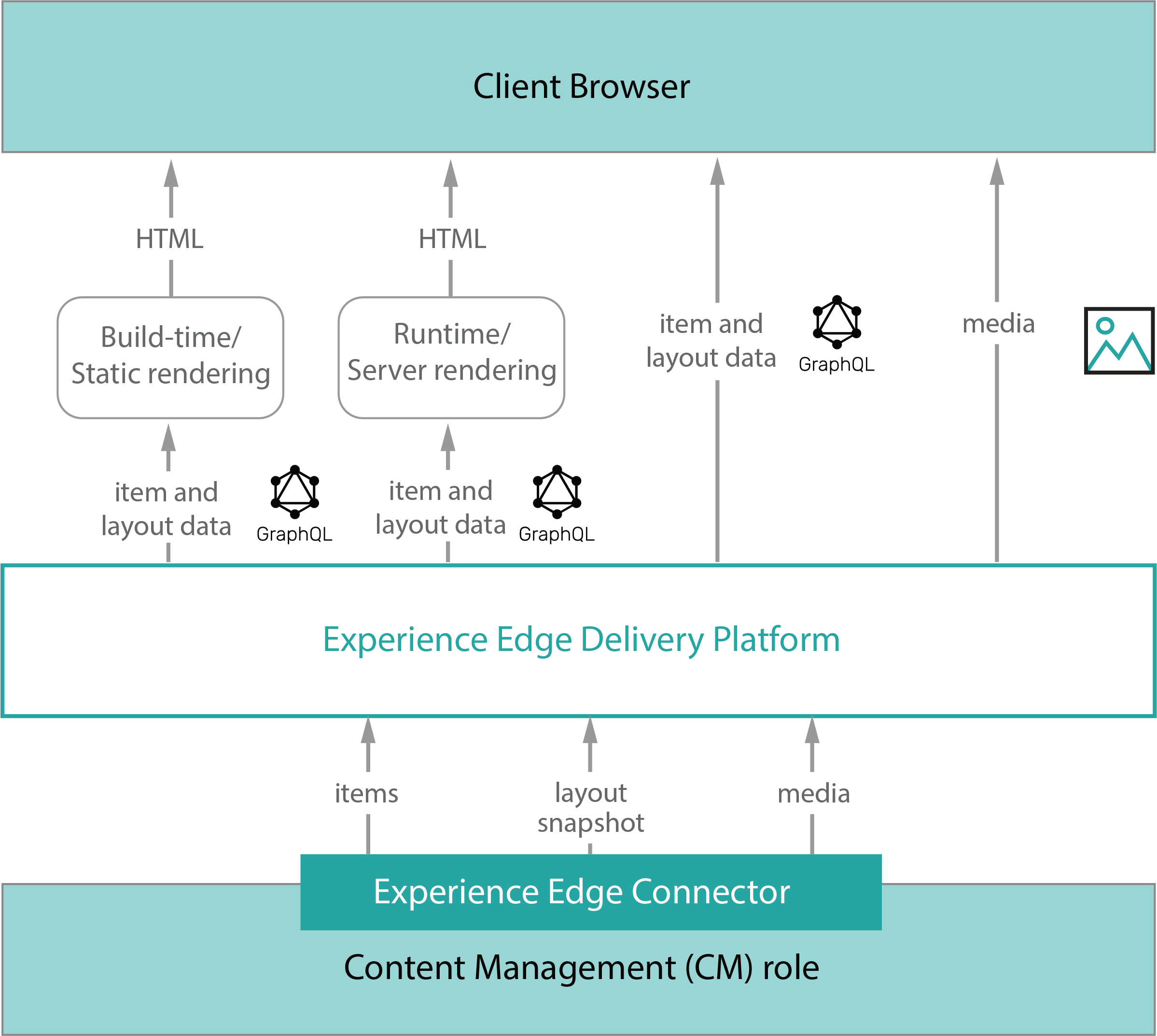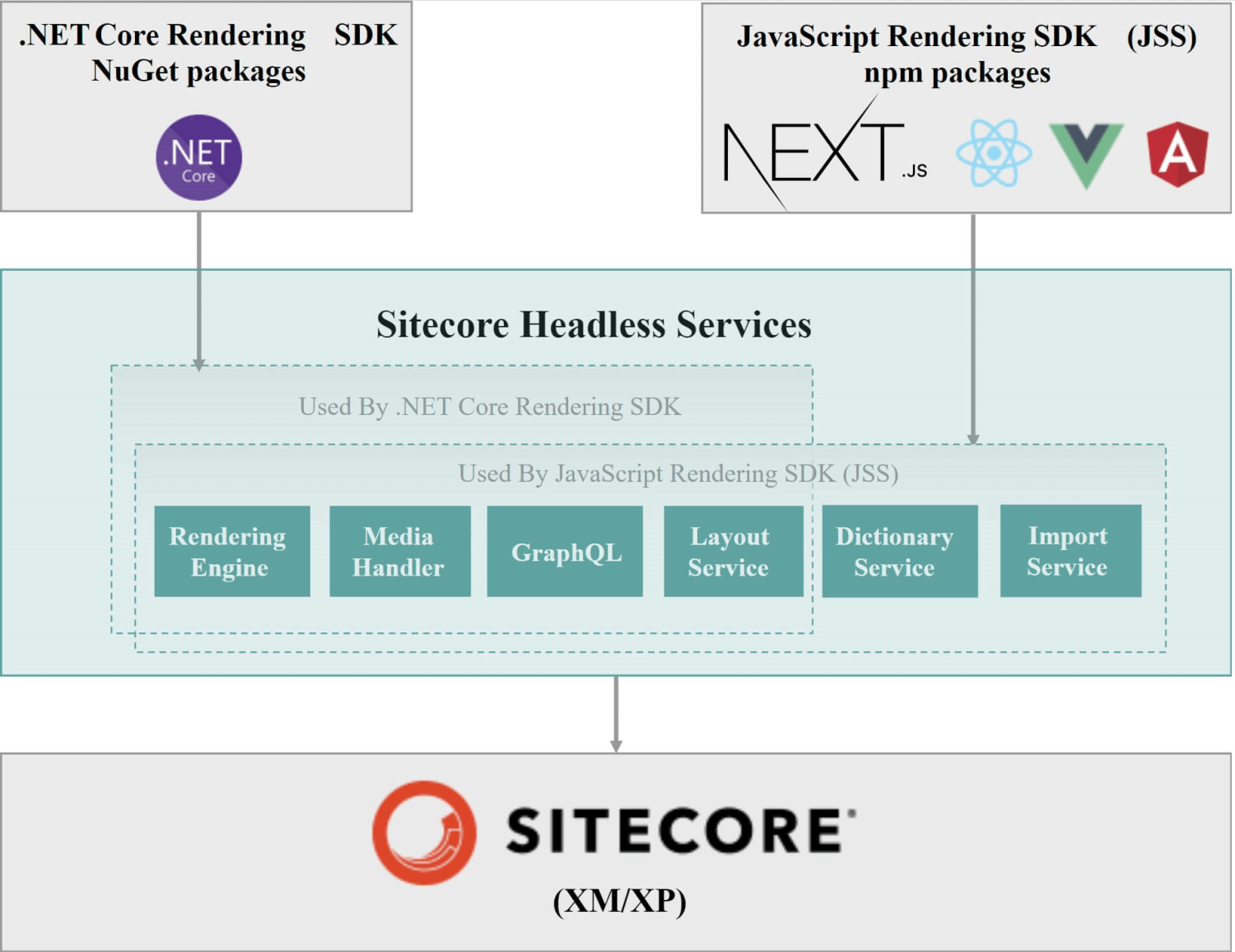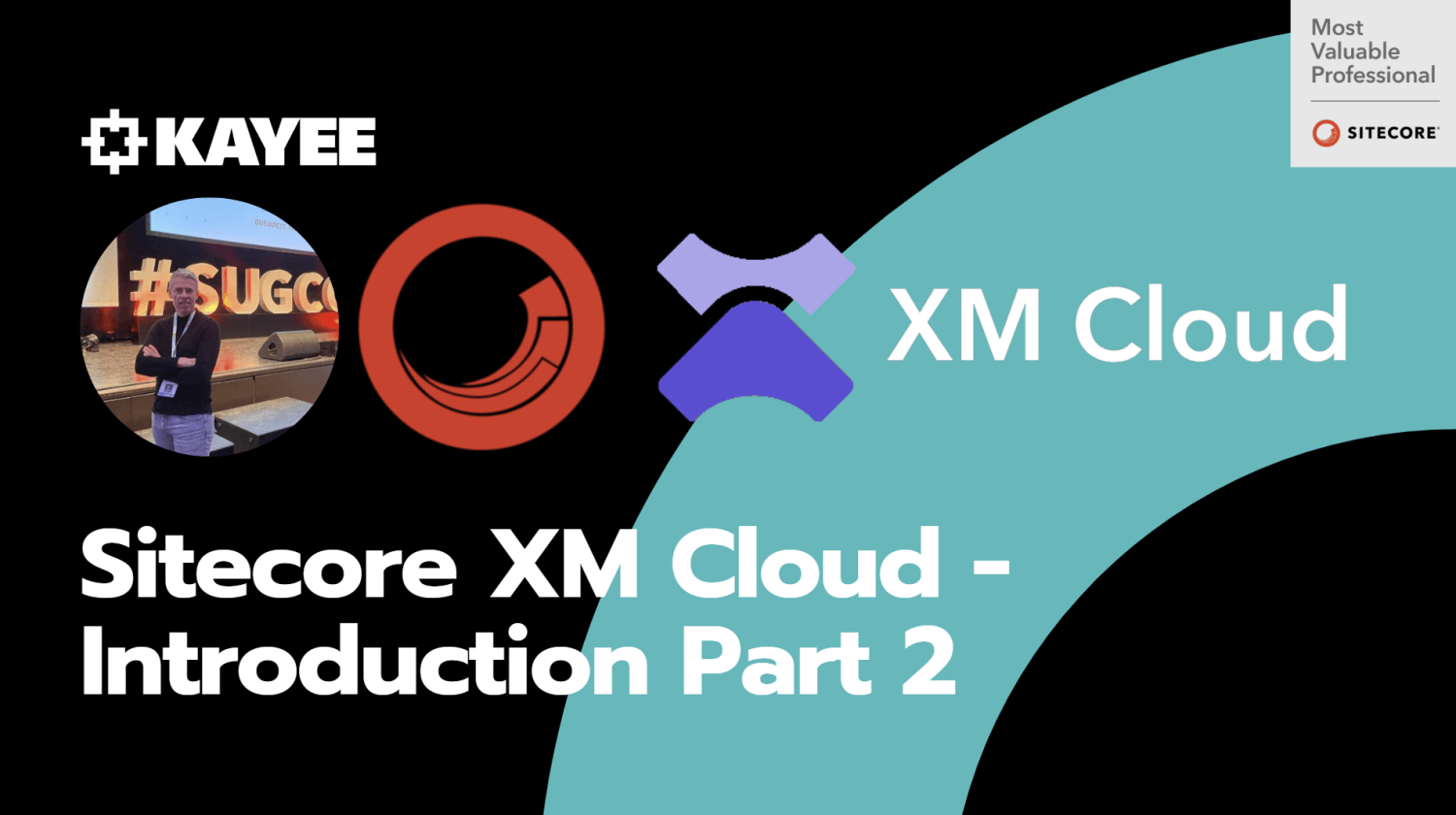On July 12th, 2022 Sitecore announced the release of their new flagship product Sitecore Experience Manager Cloud (XM Cloud).
In my previous blog post Sitecore XM Cloud – Introduction Part 1 I’ve introduced various functionalities of it.
- Headless CMS
- Cloud Portal
- Site Builder
In this blog post I’ll be looking at the more technical functionalities & architecture XM Cloud offers.
4. Content Delivery on the Edge
By default with XM Cloud you’ll be getting Sitecore Experience Edge for XM and the Experience Edge for XM connector out of the box.
Edge for XM Connector
The Experience Edge Connector allows us to publish the content from your pages and components in Sitecore XM Cloud to the highly scalable Sitecore Experience Edge delivery platform.

Experience Edge
Sitecore Experience Edge for XM is a highly scalable Content Delivery Service and offers an API-based service from Sitecore that gives you globally replicated, scalable access to your Sitecore Experience Platform items, layout, and media. Experience Edge distributes the published content across the globe via various CDN’s for a blazing-fast experience at scale.
By having Experience Edge it means that XM Cloud has replaced the traditional Content Delivery servers with this service.
No more upgrades
When you have XM Cloud, both Experience Manager Cloud (XM Cloud platform) and Experience Edge (Content Delivery platform) will be managed by Sitecore!
That means no more upgrades yourself, the Content Management (CM) and Content Delivery (CD) is something you don’t have to worry about anymore, which is a huge step for clients to move to a newer version of Sitecore on XM Cloud without the tedious and costly upgrades.
5. Deployment Tooling
Web-Based Deploy App
Through the XM Cloud portal we’ll be able to quickly create Projects and New Environments very easily. Besides that we’ll be able to quickly create Deployments as well. All through a guided setup with wizards and deployment progress monitors.
Sitecore CLI
What can be done through the XM Cloud portal can be done through the Sitecore CLI. The Sitecore CLI, which communicates with Sitecore Management Services included in XM Cloud, has been extended for this purpose.
In order to be able to communicate with the newly introduced Unified Identity Platform (see blog-post: Sitecore XM Cloud – Introduction Part 1 ) the Sitecore CLI had to be updated as well as integrating new features for creating Projects, New Environments and Deployments.
I’ll dive more into the XM Cloud Build & Deployment service in a follow-up blog-post.
6. Development Tooling
In order to develop for XM Cloud the development tools and technologies used have to follow a headless architecture and have to work with modern frontend frameworks.
Headless SXA
Sitecore Headless SXA lets you create headless JavaScript Services (JSS) tenants and sites in XM Cloud that make it easier to work with Sitecore JSS apps.
Sitecore JSS / CLI
The Sitecore JavaScript SDK (JSS) extends the dynamic, component-based Sitecore layout model to the front end. With the amazing Sitecore JavaScript Rendering SDK (JSS) for Next.js we can build blazingly-fast headless front-ends using SSG and SSR.
Unlike XM Cloud or Experience Edge these headless front-ends are customer managed and therefore will need to be upgraded by the customer/partner when a new version of for example Next.js comes out.
Headless Services

The Sitecore Headless Services module provides a suite of REST and GraphQL API endpoints that return JSON-formatted Sitecore data. Working with the Sitecore JavaScript Rendering SDK (JSS) for Next.js allows for a fast communication between front-end and XM Cloud, through the out of the box provided Layout Service & GraphQL.
Sitecore Serialization
Sitecore Content Serialization (SCS) is a system for serializing, sharing, and deploying content items, as well as keeping them in version control. Through the Sitecore CLI we’ll be able to serialize content in our source control system
Developer Starter Kit
XM Cloud will offer a starter kit, that helps development teams with a head start. With basic code scaffolding, reference implementation, and automation capabilities built-in, development teams can work much faster on their XM Cloud projects.
Sitecore is offering a repository containing the code for the MVP & SUGCON Sites, powered by XM Cloud.
And that concludes the final part of the Sitecore XM Cloud introduction. In the next blog-post I’ll be covering some things more in-depth. CU then!
Happy Sitecore-ing!
–Robbert




